
The Minnesota Democratic–Farmer–Labor Party (DFL) is the affiliate of the Democratic Party in the U.S. state of Minnesota. As of 2023, it controls four of Minnesota's eight U.S. House seats, both of its U.S. Senate seats, the Minnesota House of Representatives and Senate, and all other statewide offices, including the governorship, making it the dominant party in the state.
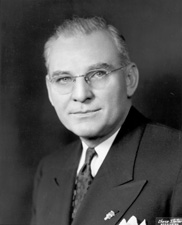
Edward John Thye was an American politician. A member of the Republican Party, he was the 26th governor of Minnesota from 1943 to 1947 and a United States Senator from 1947 to 1959.

Elmer Austin Benson was an American lawyer and politician from Minnesota. In 1935, Benson was appointed to the U.S. Senate following the death of Thomas Schall. He served as the 24th governor of Minnesota, defeating Republican Martin Nelson in a landslide in Minnesota's 1936 gubernatorial election. He lost the governorship two years later to Republican Harold Stassen in the 1938 gubernatorial election.

Henrik Shipstead was an American politician. He served in the United States Senate from 1923 to 1947, from the state of Minnesota. He served first as a member of the Minnesota Farmer-Labor Party from 1923 to 1941 and then as a Republican from 1941 to 1947.
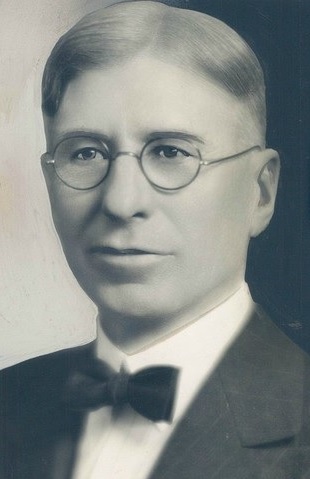
Einar Hoidale was an American lawyer, newspaper editor and elected official. He served as a member of the United States House of Representatives during the 1930s.

The 1970 United States Senate elections was an election for the United States Senate. It took place on November 3, with the 33 seats of Class 1 contested in regular elections. Special elections were also held to fill vacancies. These races occurred in the middle of Richard Nixon's first term as president. The Democrats lost a net of three seats, while the Republicans and the Conservative Party of New York picked up one net seat each, and former Democrat Harry F. Byrd Jr. was re-elected as an independent.

The 1958 United States Senate elections were elections for the United States Senate which occurred in the middle of President Dwight D. Eisenhower's second term. Thirty-two seats of Class 1 were contested in regular elections, the new state of Alaska held its first Senate elections for its Class 2 and 3 seats, and two special elections were held to fill vacancies.

The 1946 Minnesota gubernatorial election took place on November 5, 1946. Incumbent governor Edward John Thye did not seek reelection and instead ran for the United States Senate. Republican Party of Minnesota candidate Luther Youngdahl defeated Minnesota Democratic–Farmer–Labor Party challenger Harold H. Barker. Hjalmar Petersen unsuccessfully ran for the Republican nomination.

The 1934 United States Senate election in Minnesota took place on November 6, 1934. Incumbent Farmer–Labor U.S. Senator Henrik Shipstead defeated former State Senator Nathaniel J. Holmberg of the Republican Party of Minnesota and U.S. Representative Einar Hoidale of the Minnesota Democratic Party to win a third term.

The 1978 United States Senate election in Minnesota was held on November 7, 1978. Incumbent Democratic U.S. Senator Wendell Anderson was defeated by Republican challenger Rudy Boschwitz.
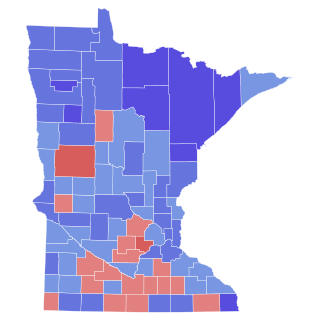
The 1948 United States Senate election in Minnesota took place on November 2, 1948. It was the first election held for Minnesota's Class 2 seat in the United States Senate since the Minnesota Democratic Party and the Farmer-Labor Party of Minnesota merged in 1944 to form the Minnesota Democratic-Farmer-Labor Party. Democratic Mayor of Minneapolis and future Vice President Hubert H. Humphrey defeated incumbent Republican Joseph H. Ball, who sought a third term in the Senate. This is the first time a Democrat won a Senate seat in Minnesota through popular vote election.
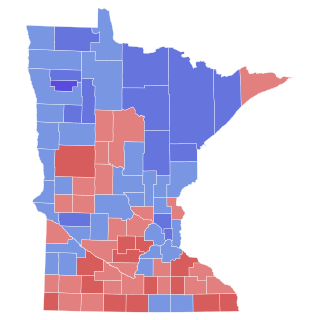
The 1958 United States Senate election in Minnesota took place on November 4, 1958. Democratic U.S. Representative Eugene McCarthy defeated incumbent Republican U.S. Senator Edward John Thye, who sought a third term. With his victory, McCarthy became the first Democrat ever to be popularly elected to Minnesota's Class 1 Senate seat.

The 1952 United States Senate election in Minnesota took place on November 4, 1952. Incumbent Republican Edward John Thye defeated Democratic challenger Bill Carlson to win a second term.

The 1922 United States Senate election in Minnesota took place on November 7, 1922. Farmer–Labor challenger Henrik Shipstead defeated incumbent Republican U.S. Senator Frank B. Kellogg and Democratic challenger Anna Dickie Olesen.

The 1923 United States Senate special election in Minnesota took place on July 16, 1923. The election was held to fill, for the remainder of the unexpired term, the seat in the United States Senate left vacant by Republican U.S. Senator Knute Nelson, who died in office on April 28, 1923. State Senator Magnus Johnson of the Farmer–Labor Party of Minnesota defeated Governor J. A. O. Preus of the Republican Party of Minnesota, and State Senator James A. Carley of the Minnesota Democratic Party, which, together with Henrik Shipstead's victory in 1922, brought both of Minnesota's seats in the United States Senate into the hands of the Farmer–Labor Party for the first time in history.

The 1924 United States Senate election in Minnesota took place on November 4, 1924. Republican U.S. Representative Thomas D. Schall defeated incumbent Farmer–Labor U.S. Senator Magnus Johnson and Democratic challenger John J. Farrell. Johnson, who was elected in the 1923 special election, had been in office for less than a year and a half when his attempt to win a full six-year term was defeated by Schall.
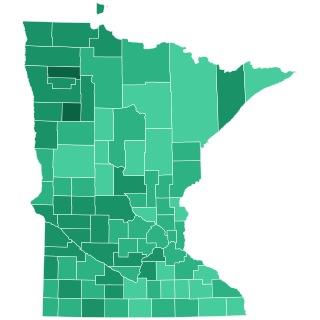
The 1928 United States Senate election in Minnesota took place on November 6, 1928. Incumbent Farmer–Labor U.S. Senator Henrik Shipstead defeated his Republican challenger, former St. Paul mayor Arthur E. Nelson, to win a second term.

The 1930 United States Senate election in Minnesota was held on Tuesday November 4, Incumbent Senator Thomas D. Schal defeated Einar Hoidale of the Minnesota Democratic Party and Forner United States Representative Ernest Lundeen of the Farmer–Labor Party of Minnesota to win a second term.

The 1936 United States Senate election in Minnesota took place on November 3, 1936. Incumbent Farmer–Laborite Elmer A. Benson, who had been temporarily appointed by Governor Floyd B. Olson in 1935 to fill the seat of the deceased Republican U.S. Senator Thomas D. Schall, opted to run for Governor rather than seek election to a full term or to fill the remainder of the unexpired term. Governor Olson won the Farmer–Labor primary for nomination to the full Senate term, but died of stomach cancer prior to the general election. In Olson's place, the Farmer–Labor Party ran U.S. Representative Ernest Lundeen, who went on to defeat former Governor Theodore Christianson of the Republican Party of Minnesota in the general election. A special election held on the same date elected Republican nominee Guy V. Howard to serve the remainder of Schall's unexpired term.

The 1940 United States Senate election in Minnesota took place on November 5, 1940. Incumbent U.S. Senator Henrik Shipstead defected to the Republican Party of Minnesota from the Farmer–Labor Party of Minnesota, and defeated former Governor Elmer Benson of the Farmer–Labor Party and John E. Regan of the Minnesota Democratic Party to win a fourth term.























